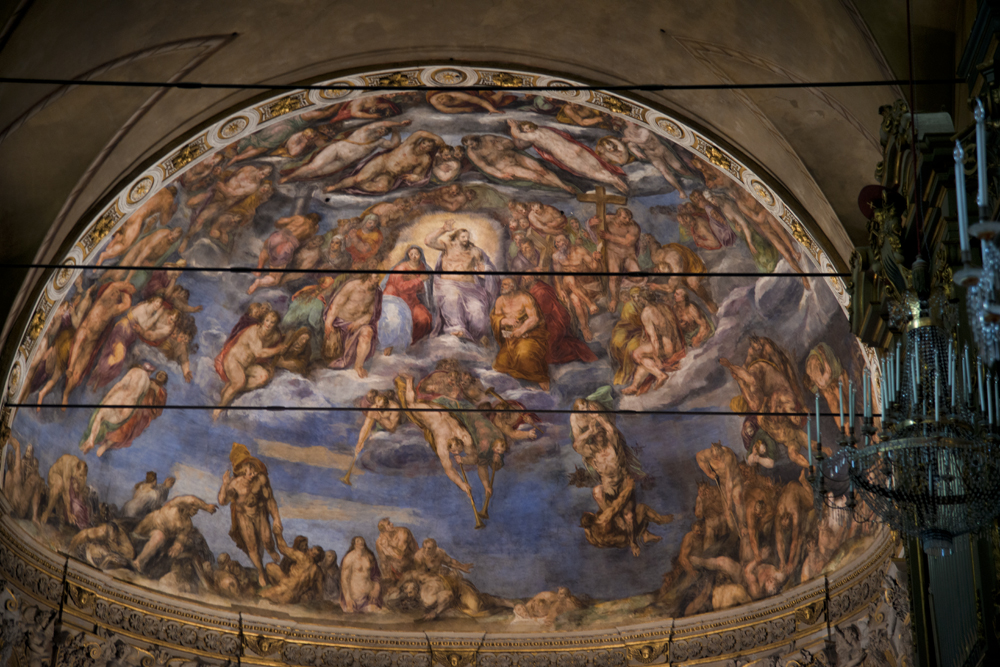The Visual Message Continues
I gave a lecture on institutional terrorism. I used images from famous churches here in Europe, pointing out that from the first time a child entered these sanctuaries he would be confronted with images of terrible torture for all those who did not profess Jesus as Savior. The most powerful of these was in the Basilica of St. Francis in Assisi. But now I’ve visited the important basilica in Ferrara, and once again, the central dome is a representation of the judgment. The Sistine Chapel carries the same theme on the entry wall. Makes you wonder how many “conversions” occurred because of fear. Makes me wonder if they would have happened at all if the idea of Hell wasn’t so useful.





Institutionalized terrorism……. is that a lecture on the site? I’ve not (or don’t remember) heard this (or have I?) but please expound, if you can?
Gave the lecture once in Virginia Beach. Not recorded. Maybe again some day
What are we to understand of Messiah seemingly warning and/or threatening of being driving into outer darkness, thrown into a fiery furnace, being cut into pieces or into two and being assigned a place with the hypocrites, all where there will be weeping and gnashing of teeth?
I have been listening to the book of Enoch (newer version, 3.5 hours long). I have been surprised atsome of the concepts, amazed at much of it. I had not been exposed to it previously. It seems to me if its origins are clean, it should be considered as scripture. Any perspective on this book?
The book of Enoch was recognized as sacred by many in the first century. It has a heavy influence on Matthew’s view of the Son of Man. There are lots of studies on this topic. The Church did not include it in the canon but that doesn’t mean people didn’t think of it as “inspired” according to first century ideas.
I read the “The Wisdom of Solomon” in my thirties which had a powerful influence in opening my eyes to the idea that the canon isn’t the only valid book in the world.
It’s sad to see that some make a profession of faith based on fear for themselves rather than fear of YHVH.
Yes, but as I pointed out in my lecture on institutionalize trauma, the Church (in general) has capitalized on images of torture, dismemberment, sexual abuse and other forms in its depictions of Hell precisely in order to scare people into confession. During the Inquisition it was permissible to torture a person to death in order to elicit a confession of faith. What mattered was saving the “soul,” at the expense of the body. This implication of Platonic dualism has haunted Christianity for centuries. Seeing it represented on the walls of cathedrals is only the tip of the iceberg.